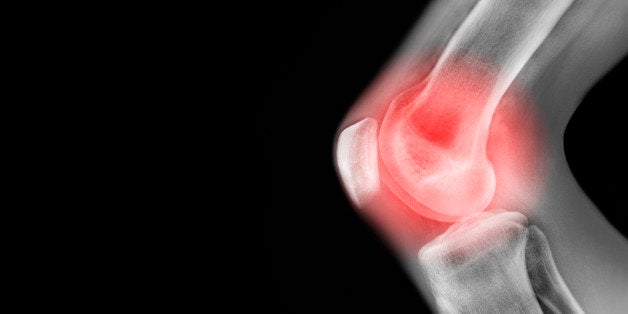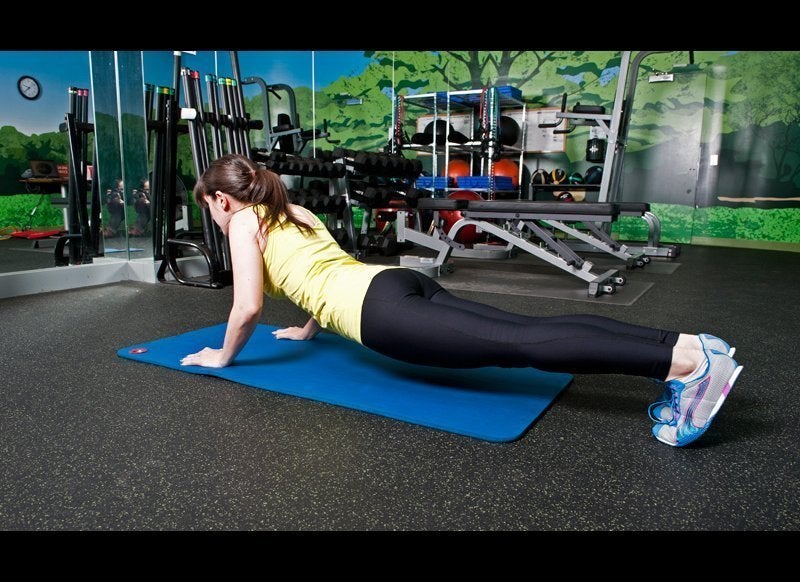
By Taylor Kubota for Men's Journal
Sports injuries happen to everyone -- and we usually recover eventually. But sometimes the risk of re-injury increases, months of hard work is lost to rest, or, worse, you don't ever fully recover. Your best bet, of course, is to prevent injuries from happening in the first place. We asked three experts -– R. Alexander Creighton, chief of sports medicine at the University of North Carolina; Jonathan L. Chang, clinical associate professor of orthopedic surgery at the University of Southern California; and Tim McAdams, team physician for the San Francisco 49ers -- to offer the most common career-ending injuries and give us their best advice on how to prevent them.
Articular Cartilage Injury
This frictionless cartilage at the ends of your bones is extremely hard to replicate. "Once you injure that we do not have a very good way to put you back the way you were before," says Creighton. An imperfect repair can lead to arthritis, recurrent swelling, and catching-and-locking-type symptoms.
The Fix: Keeping off extra pounds and working out daily is the best – and only reliable – way to lessen your chances of articular cartilage problems. Also, beware of supposed protective supplements like chondroitin, since they often don't work. "My opinion is the marketing has outpaced the science," says McAdams.
Rotator Cuff Tear
About 50 percent of people over the age of 65 have some kind of rotator cuff tearing, and it's seen by many experts as a natural part of aging. Painful tears can sometimes be addressed with physical therapy, but if surgery is required, it is an operation with a fairly high success rate.
The Fix: Working on the muscles around the shoulder is just as important as working on the muscles around the rotator cuff to prevent rotator cuff tears. Try cable-strengthening exercises, like rows.
Achilles Tendon Tear
Surgery and physical therapy are both successful ways to address this injury, but it can still be devastating. "Although the operation is not that difficult, it's quite an extended rehabilitation for which full recovery may not be possible in some cases," says Chang. A six- to nine-month recovery time -– Kobe Bryant's was more than seven months -– is fairly standard.
The Fix: This one is hard to prevent because most people who tear their achilles tendon have no prior symptoms. Genetics and activity level are big factors but cross-training with elements of yoga, biking or running may help.
Hamstring Injuries
These strains and tears are common in sports with lots of cutting movement, like soccer. If they aren't aggravated, they usually repair themselves. People generally feel better after two to three weeks of recovery time, but they should wait more like four to six. If they don't, they can end up with lingering pain for many months or even a year.
The Fix: Flexibility will be a big help in avoiding this one, especially as people get older. Basic foam-roller stretches are probably going to give the best results.
Elbow Tendonitis
Like hamstring tears, the main reason elbow tendonitis is on this list is because it's frustrating. Although you can start to feel better pretty quickly, an important part of recovery is to progress back to your activities slowly. So don't go play a full round of golf as soon as the pain is gone.
The Fix: A good way to keep from getting tendonitis is to steer clear of any heavy lifting where your arms are positioned far away from your body. Exercises like that put too much stress on your elbow and shoulder. Gentle stretching can also help ease elbow pain.
Groin Strain
Although this isn't a common injury for everyday athletes, the groin pull is a brutal one. Once someone gets groin strain, they can become chronic -– an injury you never quite shake.
The Fix: Flexibility is key. Start with hip stretches and then work on strengthening your core, which can also decrease the risk of groin strain. Using an ab wheel or doing planks are recommended over classic sit-ups because those can put unnecessary stress on your back.
ACL Tear
Every year about 200,000 people tear their anterior cruciate ligament, leading to some 100,000 reconstructive surgeries. This injury will take you out for about six months or more and, after surgery, as many as one in 20 people suffer another rupture. People with repaired ACLs are also at greater risk of injuring their other knee.
The Fix: Hamstring, quad and calf exercises and stretches have long been advised but may not be enough. "Now we're realizing it's much more than that, in terms of the control of the knee coming from the hip and the core," says McAdams. He specifically advises hamstring curls, leg presses and hip abductor strengthening.
More from Men's Journal:
The Only 8 Moves You Need To Be More Fit
17 Stretches to Prevent Injuries
How to Recover From Running Injuries
